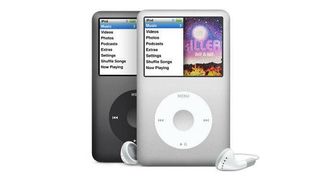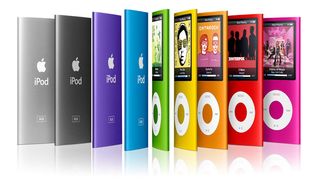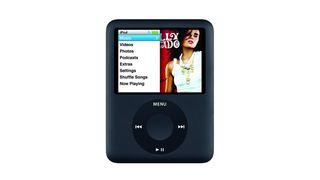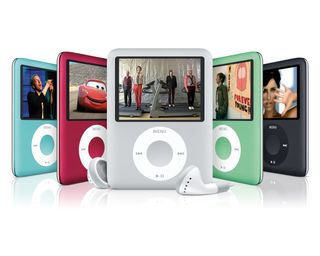How to sell your iPod: the best ways to move on from your music playing marvel
Here's how to get the most money from your old kit

There was a time when an iPod was an essential, something that every self-respecting individual carried with them at all times.
The thought of being able to carry an entire music library with you at all times was intoxicating and almost magic, and meant that there was never a dull moment whether you were riding the bus late at night, or just getting some work done in the library.
These days though, the iPod has been more or less superseded by smart phones, which have all of their music-playing abilities as well as being able to handle everything else in your connected life.
So if you’ve got an old iPod lying around, why not sell it on and get some money out of it rather than just letting it gather dust in a drawer.
In this guide we’ll cover everything you need to know about selling your retro music player so you can get the price, whatever its model or condition.

Know what you're selling
Over the years, a dizzying array of devices were released under the iPod name, ranging from fullsize iPod Classics, to tiny iPod Nanos, and screenless iPod Shuffles.
Your iPod’s type will have a big impact on how much you’re able to sell it for, and you’ll need to know both your iPod’s model and its storage capacity to avoid ending up with an angry buyer.
Get daily insight, inspiration and deals in your inbox
Get the hottest deals available in your inbox plus news, reviews, opinion, analysis and more from the TechRadar team.
There are almost too many different kinds of iPods to list here, so instead we’ll list the main types while giving you the information you need to to find out the exact type yourself.
There are five main kinds of iPod, the Classic, the Mini, the Nano, the Shuffle and the Touch.
- The Classic is what most people think of when they think of the iPod; all of these models have a screen that takes up half the body, and a scroll wheel that takes up the other half.
- The Mini is a smaller version of the classic, and was available in a variety of bright colors.
- The Nano was smaller still, and tended to have a much less wide body.
- The Shuffles were Apple's screen-less iPods.
- The Touch is the opposite of the Shuffle, and features a screen that takes up the entire front of the device. These tend to look a lot like iPhones.

To make matters even more complicated, each type of iPod saw several generations which vary wildly in terms of features and form-factor. Wikipedia has a very good visual guide to what each generation of iPod looked like and should help you work out the specifics of the hardware you’ve got.
The final step in working out what your iPod is, is to work out its storage capacity. This can be found in the ‘About’ section of the iPod’s ‘Settings’ menu.
However, if you have an iPod shuffle then you’ll need to plug your device into a computer, at which point you’ll be able to select the iPod in question, before reading its capacity in the ‘Summary’ tab.
In both cases, you’ll have to round up the amount of storage shown in the menu, as iPods will always reserve part of their capacity for internal operations.
At the end of this process you should have three pieces of information, an iPod type, a generation, and a storage capacity.

Top tips
Now we know what type of iPod you have, it’s time to prepare it for sale.
Start by working out exactly what does and does not work. Try plugging in some headphones and playing a few songs. Check that the scroll wheel works if the iPod has one, and check that all the buttons and switches are working as intended.
Try plugging the iPod into a computer and transfer one or two songs onto it to check that the storage still works as it’s supposed to.

If you find that anything doesn’t work as intended then don’t panic. You might not be able to get as much money, but so long as you’re upfront about its condition then there are many people out there who are willing to either put up with minor defects, or else purchase electronics with a view towards repairing them.
Now it’s time to get your iPod ready for sale. We’ll start by wiping it of all your data. Depending on the exact device it might be possible to do this without a computer by going into the Settings menu, selecting General, and then pressing Reset.
Otherwise you’ll need to plug your iPod into a computer and open up iTunes. Select your iPod, and then jump into the Summary panel. Finally, click Restore, confirm your choice, and your iPod will be wiped of all personal data.
Leave your iPod plugged in while it completes this operation, and wait for it to restart. Congratulations, you’ve just wiped your iPod.
Now that your iPod has been restored to its factory settings, try and pull together as many of its original accessories as possible. If you’ve got the original earbuds and box then you can sometimes get more money.
Where to sell
Depending on how much effort you’re willing to put in, there are a variety of different ways you can sell your device. We’ve outlined your main options below, but these will vary based on your exact location.
The direct approach: eBay, Gumtree and Craigslist
Selling your iPod directly takes the most effort, but you’ll also likely be able to make the most amount of money because the cash is going directly to you.
Depending on the service there might be some fees to pay, but you’ll usually still end up with more than you’d get from a trade-in service.
eBay and Craigslist are your two best options if you’re looking to sell your iPod online, although Gumtree is also good if you’re in the UK.
When writing your listing be sure to be as descriptive as possible to allow people to find your listing, and try to take any photos with as good a quality camera as possible. This will make your iPod look as appealing as possible to any potential buyers.
If you’re not sure how much your iPod is worth, then setting your sale as an auction on eBay is a good way to go. This way you’ll get the maximum that people are willing to pay.
Alternatively, you can use eBay’s recently sold listings (using the ‘advanced search’ function on the site) to get an idea of what people have been willing to pay in the past. You can then use this information to either set a ‘Buy it Now’ price on eBay, or else sell your iPod on Craigslist or Gumtree.

Use a trade-in service
Alternatively, if you’re happy to accept a slightly lower price, then numerous online trade-in services exist.
Many of these services are quick and easy. You tell the company what you’re looking to sell, they tell you how much it’s worth, and after you’ve sent it in to them you’ll usually have the money in your account shortly.
You don’t have to take any photos, or write any listings.
These services vary based on what region you’re in. In the US Amazon offers a trade in service that includes iPods, while in the UK both Music Magpie and CeX are good options.
Before you commit to selling your iPod, be sure to shop around to find the best deal.
Many of these services will ask you about the state of your device. You’ll have to be honest here, since they’ll all test your iPod to see if it’s working once they receive it, and if you lie about it working when it doesn’t, this can delay you receiving your money.

Even if it's broken, remember to recycle
If you’ve dusted off an old iPod only to discover that it’s no longer working then you should still remember to recycle it for the sake of the environment.
With Apple products this process is made much easier by the fact that Apple Stores will happily do this for you. Simply take your iPod into any store and they’ll take it off your hands to break it down and reuse its materials.
You could, of course, attempt to sell your broken iPod on eBay in the hope that someone might want to buy it to repair it, but we’d be wary of recommending you put in the effort for very little reward.
Jon Porter is the ex-Home Technology Writer for TechRadar. He has also previously written for Practical Photoshop, Trusted Reviews, Inside Higher Ed, Al Bawaba, Gizmodo UK, Genetic Literacy Project, Via Satellite, Real Homes and Plant Services Magazine, and you can now find him writing for The Verge.

